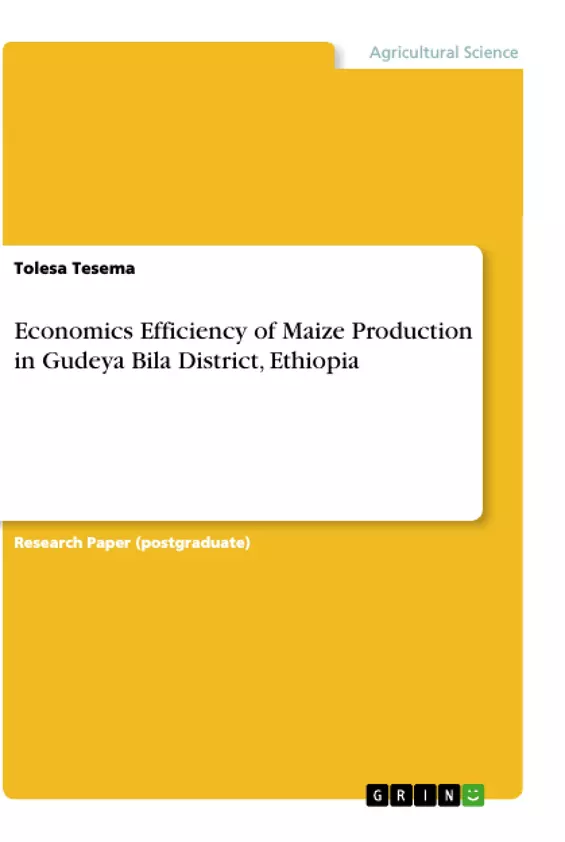Farming is the way of life for smallholder farmers of Ethiopian which is characterized with low productivity. Thus poor are failing to achieve rapid economic growth due to food insecurity. Hence the best possible means of achieving economic development is through increasing sustainable allocation resource efficiency. This study employed stochastic frointer approach to assess the levels of efficiency and Tobit model to assess the determinants of efficiency by collecting data from 154 sample household in Gudeya Bila district, western parts of Ethiopia.
Inhaltsverzeichnis (Table of Contents)
- Abstract
- 1. Introduction
- 2. Methods
- 2.1. Description of the study area
- 2.2. Sampling techniques and questionaries' design
- 2.3. Model specification for efficiency and determinants of efficiency
- 3. Results
- 3.1. Estimation maximum likelihood estimate
- 3.2. Technical, allocative and economic efficiency score
- 3.3. Distribution of technical allocative and economic efficiency
- 3.4. Determinants of Technical, allocative and economic efficiency of maize and its marginal effects
- 4. Conclusion and policy implication
- Reference
Zielsetzung und Themenschwerpunkte (Objectives and Key Themes)
This study aims to assess the levels of economic efficiency of maize production in Gudeya Bila district, western Ethiopia, using a stochastic frontier approach. It also aims to identify the factors influencing efficiency, using a Tobit model. By analyzing data from 154 households, the research investigates the impacts of factors such as wild animal damage, land slope, and off-farm income on technical, allocative, and economic efficiency in maize production.
- Economic efficiency of maize production in Gudeya Bila district
- Determinants of technical, allocative, and economic efficiency
- Impact of wild animal damage, land slope, and off-farm income on efficiency
- Policy implications for improving maize production efficiency
- Application of stochastic frontier and Tobit models for analysis
Zusammenfassung der Kapitel (Chapter Summaries)
- Introduction: This chapter introduces the context of maize production in Ethiopia, highlighting challenges related to low productivity, food insecurity, and the need to improve agricultural efficiency. The study area, Gudeya Bila district, is described as a region with a mixed crop-livestock system, where maize is a major food crop. The chapter emphasizes the importance of understanding efficiency determinants for improving maize production and alleviating food insecurity.
- Methods: This chapter outlines the research methodology, including the study area description, sampling techniques, and the models employed for efficiency analysis. The stochastic frontier model is introduced as a tool for measuring efficiency levels and capturing inefficiency factors. The Tobit model is presented as a means to analyze determinants of efficiency. The chapter also provides details on the data collection methods and the specific variables considered in the study.
- Results: This section presents the findings of the study, covering the estimated parameters of the production function, the levels of technical, allocative, and economic efficiency, and the distribution of these efficiency scores. It further analyzes the determinants of efficiency and their marginal effects, exploring the impacts of various factors on maize production.
Schlüsselwörter (Keywords)
This study focuses on the economic efficiency of maize production, employing stochastic frontier and Tobit models to analyze the determinants of efficiency. Key themes include the impact of factors such as wild animal damage, land slope, and off-farm income on technical, allocative, and economic efficiency. This research aims to provide insights into improving maize production and contributing to food security in the Gudeya Bila district of Ethiopia.
- Quote paper
- Tolesa Tesema (Author), 2021, Economics Efficiency of Maize Production in Gudeya Bila District, Ethiopia, Munich, GRIN Verlag, https://www.grin.com/document/1162275



